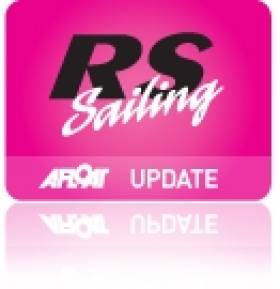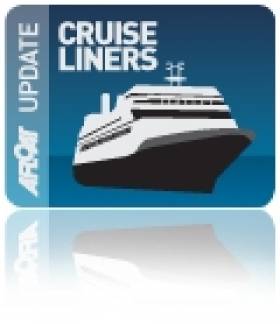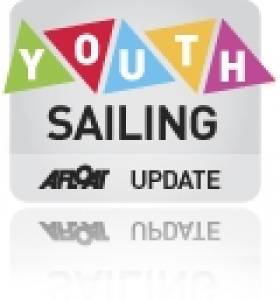Displaying items by tag: Dun Laoghaire
Dun Laoghaire 'Urban Beach' Greenlit By Planners
#DunLaoghaire - Plans for an 'urban beach' at Dun Laoghaire's waterfront first mooted more than a year ago have been given the green light by planning authorities, according to the Irish Independent.
As previously reported on Afloat.ie, the €2.5 million scheme is inspired by the Badeschiff in Berlin and will comprise and artificial beach with a floating heated swimming pool on a barge, with a café, changing areas and other facilities in temporary modular pods.
According to The Irish Times, it's expected that access to the East Pier beach – which will operate for six months each year – will cost the same as the average cinema ticket, generating as much as €1 million each year.
Locals who voiced opposition to the scheme in last year's public consultation hope that this money will go towards restoration of the derelict Victorian baths nearby.
To see photographs showing the proposed site in Dun Laoghaire, and photomontages of the initial conceptual design click HERE.
Fireballs Benefit From Two races At DMYC Frostbites, Dun Laoghaire
#fireball – A cloudless sky and bright sunshine allowed the Race Management Team for the 2014/15 Frostbites to get in two races on a trapezoid course yesterday writes Cormac Bradley.
A new app on my phone, "Windfinder", gave me a reading of 8 knots of breeze at 15:00 coming out of the West and the nine Fireballs in the first race and the eight who finished the second race were certainly having reasonable trapezing conditions all afternoon.
I missed the first start from my shore-side location but was able to see the entire fleet go right on the first beat before tacking onto starboard in the vicinity of the harbour mouth to take the hitch in to the weather mark, which was located to the west of the approach to the inner marina.
The rounding order at this first weather mark was Kenny Rumball & Teddy Byrne (15061), Conor & James Clancy (15113), Noel Butler & Stephen Oram (15058), Luke Malcolm & Harry O'Reilly (14790) and Alistair Court & Gordon Syme (14706).
The top leg of the trapezoid was a tight spinnaker reach with the gusts coming out of the approach to the inner marina adding a bit of spice to the leg. Mark 2 was situated close to the end of the HSS gantry which gave boats the choice of gybing immediately at No.2, or continuing towards the HSS gantry and gybing later. In the first round, Frank Miller and Grattan Donnelly were the only ones to exercise the first option.
This leading group of five boats were not really pressing each other; the two which were closest were Court and Malcolm at the tail end. However, at Mark 3, a red spinnakered boat capsized and it was only at the next weather mark that I was able to establish that it had been Messrs Butler & Oram who has slipped up – most unusual – leaving them behind the entire fleet.
Rumball appeared to pull away from Clancy between 2 and 3 and on rounding 4 went all the way across to the harbour mouth on port before tacking for No.1 for the second time. Clancy followed suit. A number of boats went left but this did not have any real effect on the top order.
An established running order of Rumball, Clancy, Malcolm and Court saw out the balance of the race while Butler & Oram started their chase from the back of the fleet. Rumball played a slightly conservative game on the third and fourth beats seeming to take a hitch to the left before going right again to cover Clancy. The distance between these two fluctuated over the last two laps but Rumball was never really threatened.
Mary Chambers & Brenda McGuire (14865) decided that conditions were right to give their sails a wash in the briny with a slow motion capsize on the top leg of the third lap. The bottom leg of the course was becoming tighter with some boats two sailing from Mark 3 to Mark 4.
By the last weather mark Rumball was comfortably in the lead, Clancy was secure in second and Luke Malcolm was in the Mug winning slot. This remained the status until the finish, but Butler had recovered to sixth (by my count) at the line.
The course was tweaked for the second race and at the start the nine Fireballs were jockeying around the committee boat. Louise McKenna & Hermine O'Keeffe (14691), were furthest away while Luke Malcolm hovered outside the starting box and came in slightly later to hog the slot closest to the committee boat end. Three boats bailed early to go right towards the harbour mouth, while Frank Miller and Louise McKenna worked the left hand side. By the time the fleet converged on the first weather mark, there were five boats in a tight bunch – Clancy, Rumball, Malcolm, Butler and Miller. Alistair Court bailed at this stage with a breakage of some sort, leaving eight boats to contest the race.
Again the top reach was a proper 3-sailer, but the change in position of Mark 2 took the HSS gantry further out of the equation and boats had to make a distinct change of course at 2 to get on the rhumb line for 3. Clancy and Rumball sailed these two legs in close company and a flurry of gybes in the latter half of the leg to 3 saw Rumball get the inside slot at 3 and the lead of the race. He didn't let it go! From 3 to 4, Miller and McKenna had their own private race going hard to weather in a tight luffing match.
For the second beat, the majority of the fleet went right again, but "three Amigos" went left – Miller, McKenna and Chambers. Miller worked the left hand side to maximum effect and running out of sea-room executed what should have been a normal tack – except that he hovered on the brink of a capsize for a short time before good crew work got the boat back on an even keel. Trouble was that the exertions to keep the boat upright led to his crew's "centre of gravity" being outside the boat, so a secondary scramble was required to prevent him going overboard.
At what was to become the last weather mark, the order was Rumball, Clancy, Malcolm, Butler, McKenna, Neil Colin & Mary McGuinness (14775), Chambers and Miller. However, between 1 and 2 Butler overtook Malcolm by sailing a higher line and extending that line beyond 2. Malcolm gybed at two to head into the body of the harbour, but by the time 3 came round, he had lost to Butler.
As the leaders approached Mark 4, the Irish Lights vessel Granuaile entered the harbour prompting a shortened course signal by the Race Committee.
Thus the finishing order, based on the sequence of spinnakers on the bottom of the trapezoid, was, Rumball, Clancy, Butler and Malcolm. This result gave Messrs Butler & Oram the second Mug of the Day.
DMYC Frostbites 2014 – 15
Results after 4 rounds, no discard. Sail No. Club R1 R2 R3 R4 Tot Pts
1 Kenneth Rumball & Brian Byrne 15058 INSC 1 1 1 1 4
2 Noel Butler & Stephen Oram 15061 NYC/DMYC 2 3 6 3 14
3 Luke Malcolm & Harry O'Reilly 14790 Howth 7 4 3 4 18
4 Conor & James Clancy 15113 RStGYC 13 2 2 2 19
5 Frank Miller & Grattan Donnelly 14713 DMYC 3 6 5 8 22
Neil Colin didn't have regular crew Margaret Casey on board yesterday but a former Fireballer, Mary McGuiness. Since leaving the fleet 10 years ago Mary McGuinness, the former owner of 14374 , has become a fully-fledged Jedi (J109) with a Fastnet T Shirt in her wardrobe. They launched early and experimented with the joys of symmetrical kites, re-familiarised with the trapeze and balance factor and were then ready for the off, after some encouraging comments from the front runners, whom they later came across in a soggy state!( A rare swim for 15061).
14–Boat 'Boisterous' RS Fleet Sailing in DMYC Frostbite Series
RSsailing – RS Sailors were on the water in Dun Laoghaire for yesterday afternoon's latest round of the DMYC dinghy Frostbite series writes Sarah Byrne.
With a lovely westerly breeze forecast on a crisp cloudless afternoon in the busy harbour, PRO Olivier opted for two races 'inside' on the default trapezoid. 14 boats on the RS start line proved boisterous and noisy at the Committee boat end, one OCS By Alexander Rumball in 1143 and a lone 200 owning the pin end.
The first beat proved uneventful with a cluster at the first mark and prompt hoists separating the wheat from the chaff down the first reach. At the second mark, some gybed away from the breeze bouncing around the HSS pier, only to arrive together again but with water at the next mark, then heading up onto a rather tight reach with some being forced to drop their kites. Multi fleet traffic forcing tacks spread the fleet further on the second beat. Marty & Rachel managed to maintain their lead throughout the four laps in the 200 fleet; Totts/Kelly battled with Enzo/Tom while Sarah/Katie hot in pursuit performed a particularly idiotic capsize to put them out of the race. Marty and Rachel came in just 1 second (on PY) behind the lead 400, Ross McDonald and Peter Bayly, taking joint second with Emmet and James Ryan.
Counting down to race two, with those in shorties beginning to get a bit chilly, the fleet were less unruly on the start line and again a lone boat owned the pin end. Two thirds up the first beat, the wind dropped and shifted a little to the north and hey ho a fishing boat comes barging through the fleet towards the first mark, messing it up a tad. Again Marty had made it first 200 to the top mark hunting down the new 400 pairing Sean Clery and Ronan Jones throughout and finishing together. Totts and Myles stayed just out of Sarah and Katie's reach for two of the three lap race when it was sadly and prematurely shortened as the Grannuaile demanded her passage through the course. On PY Marty and Rachel yet again owned the race, the Ryan Bros. and Andrew Algeo and Paul Nolan came in second and third overall.
Maeve Rafferty loving her new hull – thank you RS sailing! Quite the pleasant afternoon! The weekly Mug went to Ross McDonald and Peter Bayly for the first race and Emmet and James Ryan for the second race.
Annalise Murphy Moth Foiling Off Dun Laoghaire
#mothsailing – Irish sailing superstar Annalise Murphy was Moth sailing at the weekend, participating in the latest round of the Irish Moth circuit at the National Yacht Club in Dun Laoghaire. A combination of high speed video action from a chasing RIB plus and onboard shots shows how the Laser ace also had the skills to win the Women's World Moth champs at Hayling Island in the UK in August.
Moth Dinghy Foiling Photo Action From Dun Laoghaire!
#mothsailing – Foiling Moth's took to the waters of Dun Laoghaire for the latest round of their 2014 Tour this bank holiday weekend, producing the now familiar thrills'n'spills. Race Officer Con Murphy from the National Yacht Club captured the action. Scroll down for photo gallery below.


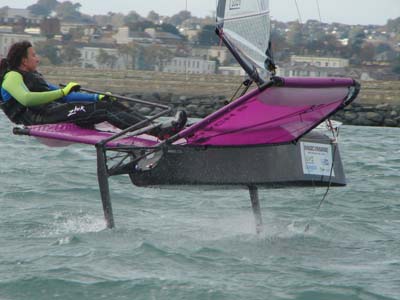
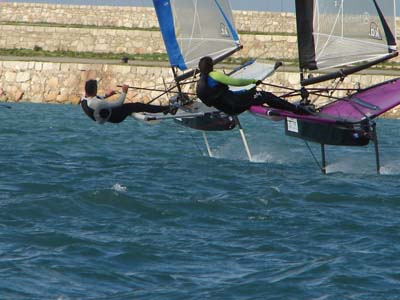
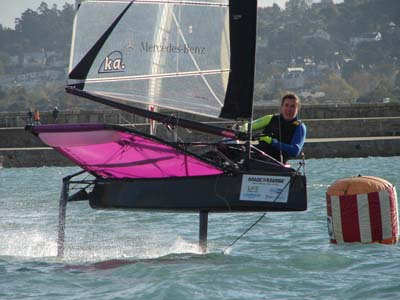
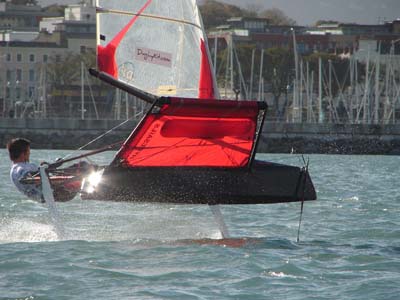
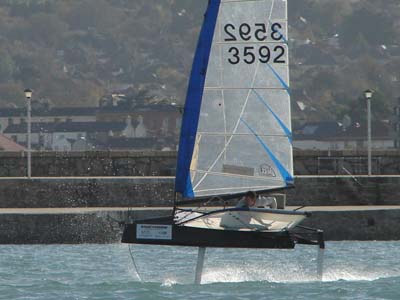


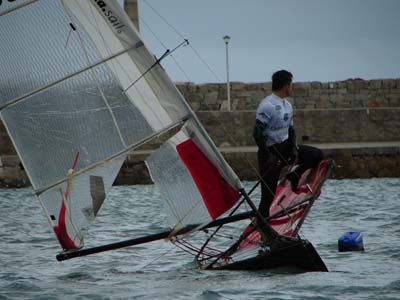



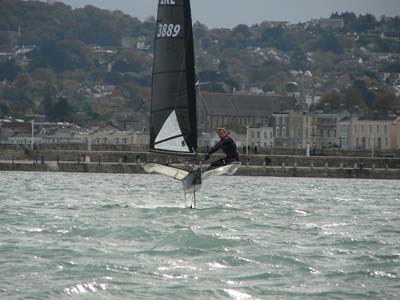
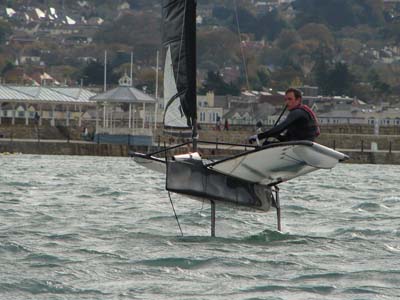
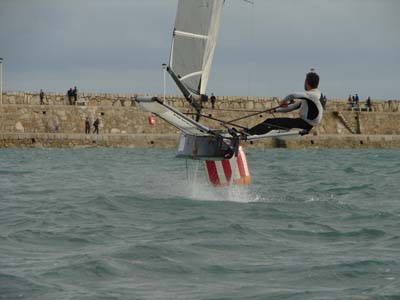


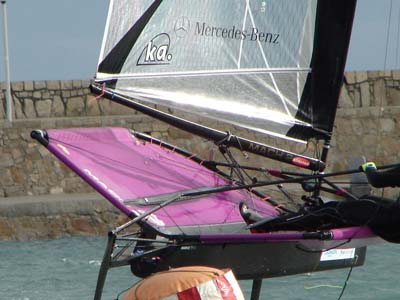
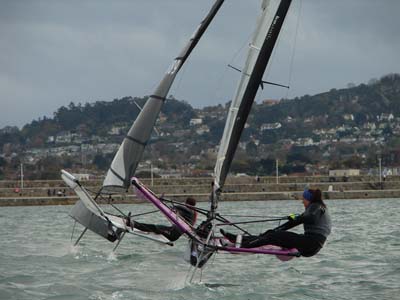
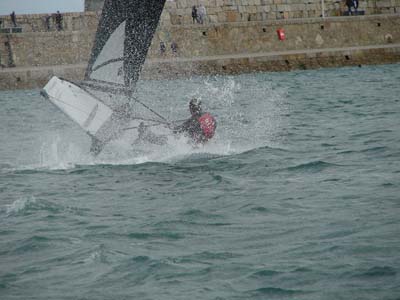
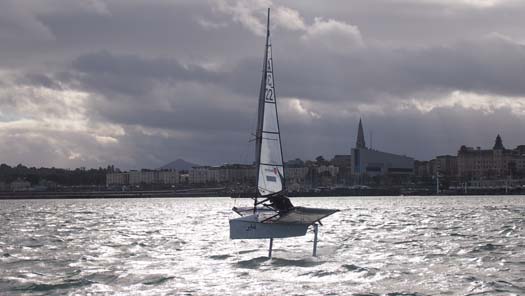

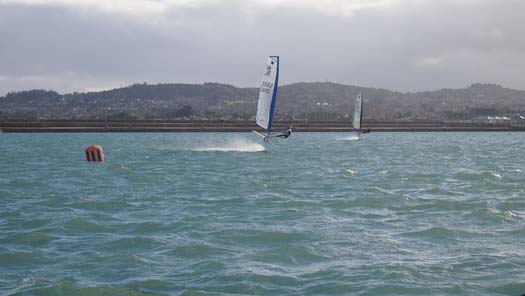
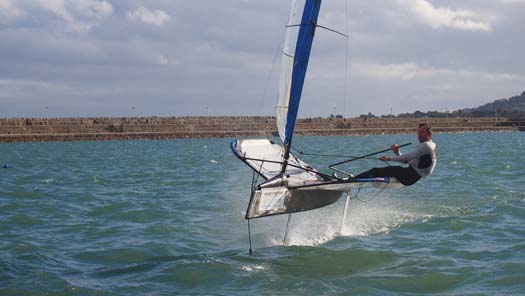
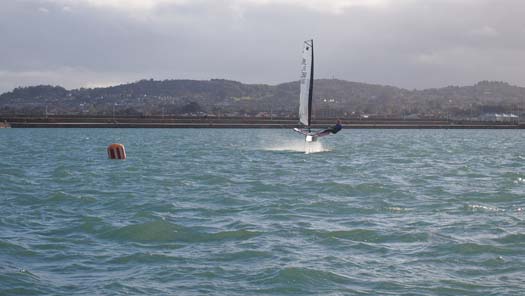
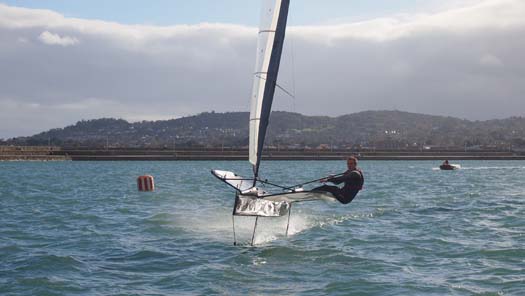


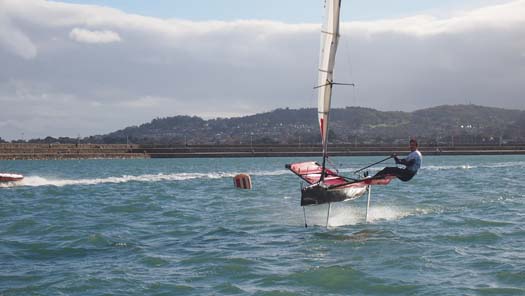

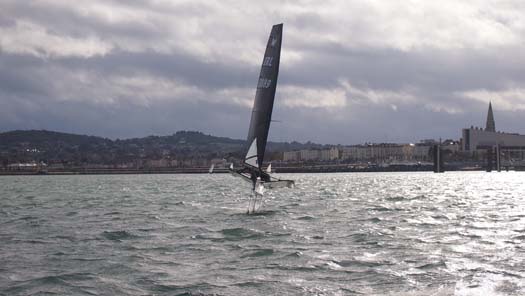
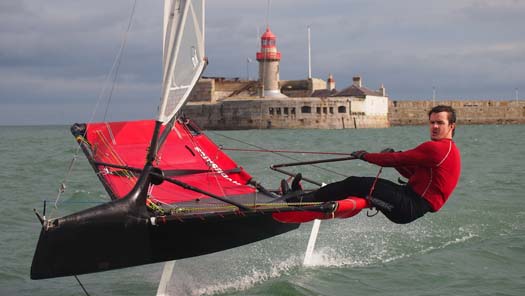


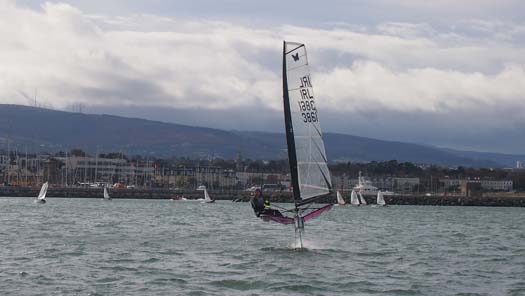
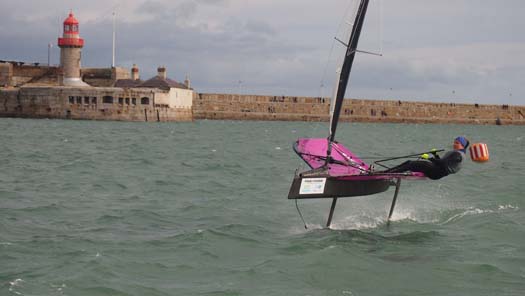
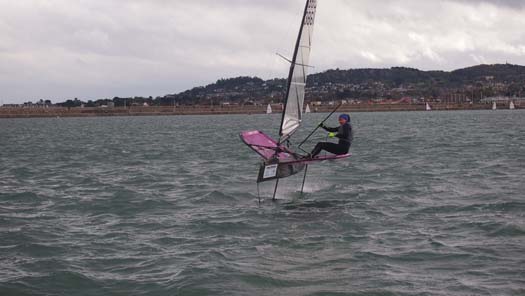
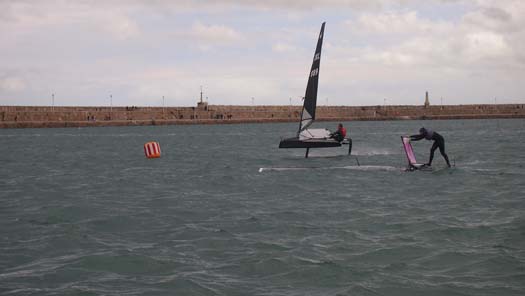
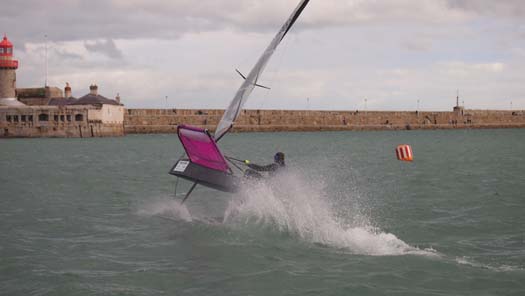
What's The Way For Dublin Bay's Classic Boat Sailors?
Last week's Sailing on Saturday blog about the fate of classic yachts was a revelation about our readership. Although three significant historic vessels in three different and distant locations were involved, it was the news about the re-build of the Dublin Bay 24 Periwinkle which drew nearly all the attention. Cork Harbour may indeed be the true capital of Irish sailing, but the sheer size and wealth of the South Dublin population accessing the sea through Dun Laoghaire gives it special power and interest. As someone whose home port is outside Dublin Bay, W M Nixon happily returns to the fray.
It's little wonder that Ireland has won more than her fair share of Nobel Prizes for Literature, yet frequently has to look abroad when boats need to be built. We're great at working words into packages of merchandisable literature or high-flown arguments, but we're maybe not so good at building boats, or even looking after them.
But then, Albert Einstein was a keen sailing man, yet despite his intellectual genius, his boat was always a bit of a mess. So maybe it's all of a piece, that last weekend's story about – among other things – the re-build in France of a classic Dublin Bay 24 of 1948 vintage, has in the space of a few days evoked thousands of beautifully-crafted words in the comment section with enough heat generated to warm a small town. (to read comments scroll to the end of last Saturday's blog here – Ed)
Some of the big beasts of Dun Laoghaire's sailing jungle have enthusiastically thrown their hats into the ring, and already we can imagine some shrewd producer of Cable TV docu-dramas setting out a potential cast list for the likes of Roger Bannon and Hal Sisk, while the mysterious Michael Joseph will be played by The Man In The Iron Mask.
The irony of it all is that all these commentators aspire to the same thing – increased vitality and enthusiasm in Dun Laoghaire sailing. And sometimes, if they would take more time to read each other's detailed comments, they'll find they broadly are advocating the same methods of providing boats which will set the local sailing imagination alight, rather than being just another set of plastic fantastics.
But because of the Irish habit of "wanting nothing to do with that other crowd," a lot of creative diplomacy is needed to harness all this energy. Maybe an intense level of debate is unavoidable. For as we've said of another venerable Irish classic boat class which manages to survive and prosper, it does so by inverting the laws of physics, and relying on friction to create energy.
Let's begin with the most straightforward query – Michael Joseph's first question, posted on Wednesday 15th October, as to why do we think that the setup in Dun Laoghaire is not conducive to the preservation and continuing vitality of a class of 38ft classic wooden yachts, in other words the Dublin Bay 24s?
Well, basically it's because Dun Laoghaire has great difficulty in getting some of its acts together. It's physically a very fragmented sort of place. The relationship of the town with the harbour has always been problematical, and it's difficult to generate a general sense of maritime community which might be conducive to encouraging classic yachts which need to be well loved.
When the plans for the new "Asylum Harbour" were drawn up in 1817, it was seen purely as a shelter facility for shipping caught out in in adverse weather in the Dublin Bay. Although there was a tiny quay at Old Dunleary (the area is still known as The Gut), in the initial plan it was actually shown as being outside the new harbour. The thought that the crews of ships anchored in this new port of refuge might wish to have direct contact with the nearest bit of shore seems if anything to have been actively discouraged.
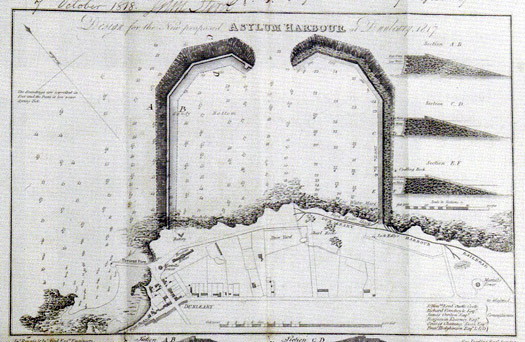
The proposed pans for an Asylum Harbour in 1817 did not include any suggestions as to possible in-harbour locations for jetties and quaysides, let alone waterfront development, and it actually excluded the small quay at Old Dunleary to the west, though in the final form the West Pier was moved further west to enclose the Old Dunleary pier.
This meant that when the inevitable shoreside facilities began to develop rapidly, it was all on a piecemeal basis. Ideally, when the plan for the harbour was finally agreed, a parcel of property of the same area as the harbour itself should have been secured on the waterfront for the planned development of a complete harbour town. But instead, you got opportunist growth - not really development at all. An unattributed quotation about 19th Century Kingstown, as it had now become, in David Dickson's recently published mighty tome Dublin (Profile Books) tells us much about the official view of the way things had got out of hand in the new seaside town, with speculative developers such as Mr Gresham from the Gresham Hotel putting up terraces of houses every which way:
".....no system whatever has been observed in laying out the town so that it has an irregular, republican air of dirt and independence, no man heeding his neighbour's pleasure, and uncouth structures in absurd situations offending the eye at every turn."
Ouch. For a growing conurbation which prided itself on being called Kingstown, that "republican air of dirt and independence" was a low blow. But as the new railway in 1834 had cut most of the new town off from the sea, an effect which was to become further emphasized by roads running parallel with it, the opportunities for dynamic interaction between town and harbour were restricted. Thus any waterfront space became too valuable to house the workshops of master craftsmen, boatbuilders and shipwrights who might be expected to be readily available to build and maintain local classes of wooden yachts of any significant boat size.
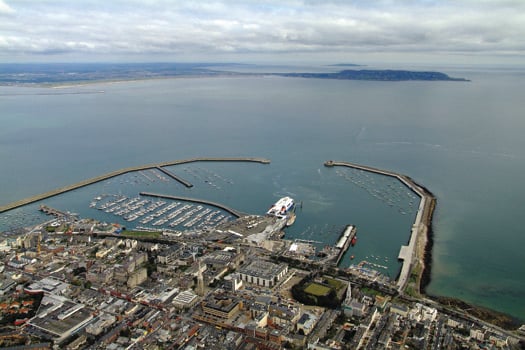
Modern Dun Laoghaire looking northwards, though it should be noted that this photo was taken before the contentious new library was forced into the waterfront between the Royal Marine Hotel and the National Yacht Club. With the water edge's almost exactly marked by the railway and the roads parallel to it, this clearcut division means that, far from the waterfront being part of a shared urban-harbour complex, the complete lack of planning in the early stages has resulted in very little comfortable inter-action between harbour and land, and there is precious little space available for locating specialist small boatyards and marine workshops which would facilitate the continuing good health of substantial wooden classic yachts.
So nowadays, the reality is that basing a cabin sailing yacht of any reasonable size in Dun Laoghaire on a year round basis is too expensive already without the added cost of her being a high-maintenance classic. The best value for money in Dun Laoghaire at the moment is probably provided by a Sigma 33 or a First 31.7 raced as a One Design. Yet in both cases, the necessary membership of one of the waterfront yacht clubs and Dublin Bay Sailing Club, added to the expense of a marina berth and the most basic running costs, means an owner-skipper is shelling out around €10,000 per annum before anything much has been done with the boat.
So although Dublin Bay Sailing Cub works wonders in co-ordinating the racing of hundreds of boats, the survival or otherwise of a class is dictated not by policy decisions on promoting new classes by DBSC, but rather by ruthless market forces, with the sheer expense of sailing from Dun Laoghaire dictating which classes can hang on when times are bad.
The result is that over the years, the surviving classics have become steadily reduced in class numbers, and only the smallest boats survive. With the loss this year of the 17ft Mermaids as an officially recognized Dublin Bay class, as they could no longer guarantee the minimum fleet of five boats, only the 25ft Glens survive from the former serried ranks of several wooden keelboats, and only the 14ft Water Wags survive of the once numerous wooden dinghies.
Yet the growing health of the Water Wags – which can trace their history back to 1887 as the world's first One Design Class - suggests that even in the cut-throat accountancy-led world of Dun Laoghaire Harbour, people still have a natural fondness for classic wooden boats. The current fleet of robust Water Wag dinghies are to a design adopted in 1904, and it adds to their attraction that although they were supposedly designed by local boatbuilder James Doyle, it's generally agreed that the real designer was his talented daughter Maimie.
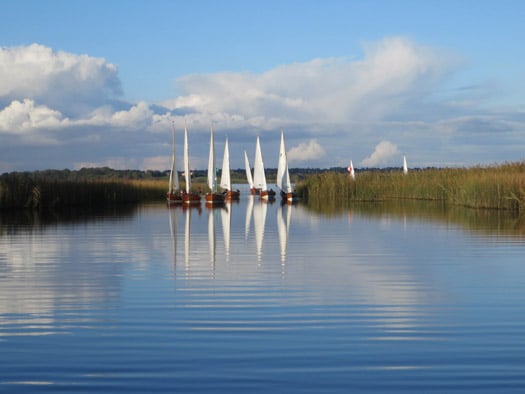
Mind the gap........ Some of the fleet of a dozen and more classic Waterwags which departed their home waters of Dublin Bay last weekend to race in County Roscommon on the North Shannon's Lough Boderg. Photo: Guy Kilroy
The class have an instinctive sense of their own community, with mutual assistance in maintenance and honing sailing skills a natural part of the healthy mix. One of the factors which has increased their viability is the huge improvement in boat road trailers, for although they remain firmly based in Dun Laoghaire, from time to time you find they've upped and left and gone off for a weekend's racing at some strange and distant location, which might well be described by the management wonks as a bonding exercise
Last weekend, they were having their annual North Shannon Regatta. One of the keenest owners, Guy Kilroy, has a farm in Roscommon on the west shore of Lough Boderg, and the Water Wags descended on him in force. Despite the presence of the great Jimmy Furey building his classic sailing dinghies at Leecarrow on the west shores of Lough Ree, you'd never have thought of Roscommon as a sailing county, but there you go. However, while the coastal Autumn leagues at Crosshaven and Howth saw the seasonal mists soon dispersed, on Boderg in the middle of Ireland it took a long time for the fog to lift. But when it did, the sailing was sublime, and they got in two good races, with four boats level on points, but Ian and Judith Malcolm in the 99-year-old Barbara won on the countback.
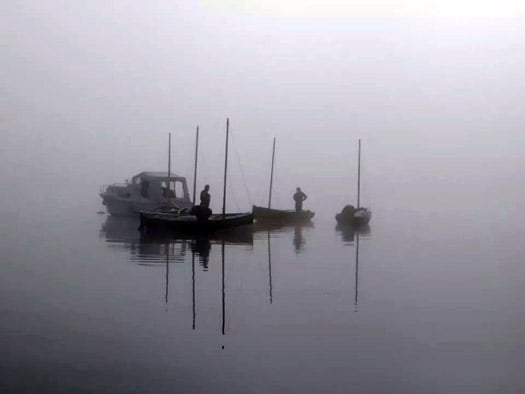
Wags-in-a-mist. While the seasonal mists soon cleared at the Autumn Leagues on the coast at Crosshaven and Howth, in the heart of Ireland on Lough Boderg the fog lingered. Photo: Judith Malcolm

Lots of TLC. They may be in the reeds, but the maintenance mustn't be done in a rush.....The high standard of TLC on the Water Wags – the oldest chime in at 110 years – is a wonder to behold. Photo: Ian Malcolm
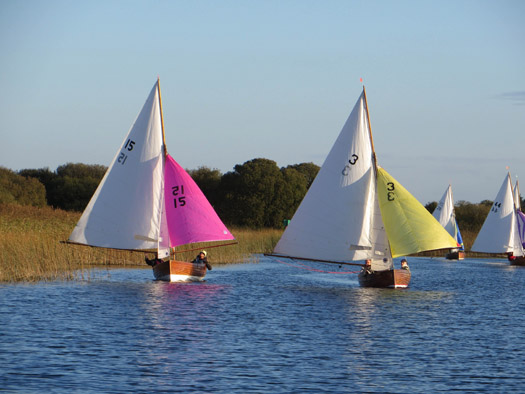
When all the loving care becomes worthwhile – perfect racing on Lough Boderg last weekend for David McFarland's Moosmie (15) and Vincent Delany's Pansy (3), with Killian Skay's Maureen (29) and Scallywag (44, David Williams and Dan O'Connor) in gentle pursuit. Photo: Guy Kilroy
Maintaining a Water Wag is a very manageable business, but inevitably as the recession recedes, there'll be noises about reviving larger wooden classics, and there's a feeling that the Mermaids aren't completely finished in Dun Laoghaire harbour just yet. There was an interesting twist to this in 2014's Mermaid racing, as the National Championship at Rush was won by Jonathan O'Rourke of Dun Laoghaire's National YC.
Despite being up in Fingal's Rogerstown heartlands where in recent years they've built some supposedly hyper-competitive Mermaids with the clever use of epoxy, Skipper O'Rourke's boat is the 1960 Grieves Brothers built Tiller Girl, which is surely a hopeful sign for the class's future.
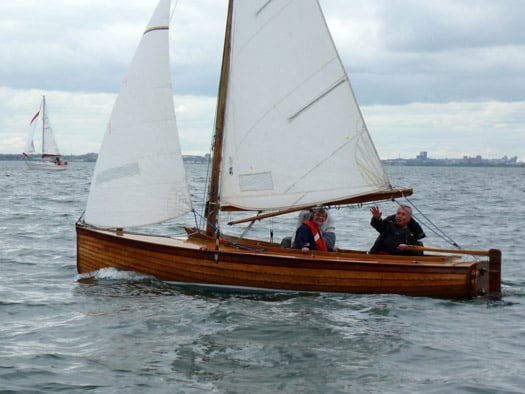
The age-defying champion. Mermaid Champion 2014 Jonathan O'Rourke (National YC) with his 1960-built Grieves Brothers boat Tiller Girl. Despite there currently being no racing for Mermaids in Dun Laoghaire, Tiller Girl won the Nationals at Rush even though she was in the area where new supposedly lighter Mermaids, using the exoxy wood system, have recently been built. Photo: W M Nixon

Well, hello Dolly! Named after the world's first cloned sheep, the cloned GRP Mermaid Dolly (white hull) was built in the hope of revitalizing the class, particularly in Dun Laoghaire. But even though she only had a fiberglass hull shell with the rest of her – including the mast – in wood, the new concept was rejected by the class. So Dolly is now based at Sag Harbor in the Hamptons on Long Island in America, where she is much admired, while three of her sisters have proven very to be very durable and effective training boats at a sailing school in West Cork.
Nevertheless, it's at this time of the year that the hassle of maintaining a clinker built wooden boat comes centre stage yet again, and I have to confess that when Roger Bannon produced the fibreglass-hulled Mermaid Dolly, I thought she was a super boat and still do, but the class elders decided otherwise.
Moving on up the size scale, we return to the battleground of the Dublin Bay 21s, still mouldering in a Wicklow farmyard. I only once sailed on one of them under their classic gaff rig complete with jackyard topsail, and despite the enormous spread of cloth, was very impressed by how light and responsive they were on the tiller, but then we were racing in a gentle breeze.
The Dublin Bay 21s await their fate in a Wicklow farmyard
However, this constant refrain about them acquiring dangerous lee helm in strong winds seems to me to be a result of the primitive mainsail arrangement, with the tail of the mainsheet led directly from the counter to cleats on the cockpit coaming. This gave very poor levels of sail control in squalls, and often when the helmsman requested that the mainsheet be quickly but carefully eased to give him better control and keep the boat more upright, it would instead be let go with a run, the mainsail would then be flogging out of control, the close-sheeted headsails would force the bow off, the end of the long mainboom would then hit the water causing the sail to fill with the boat now on a reach, and over and under she'd go.
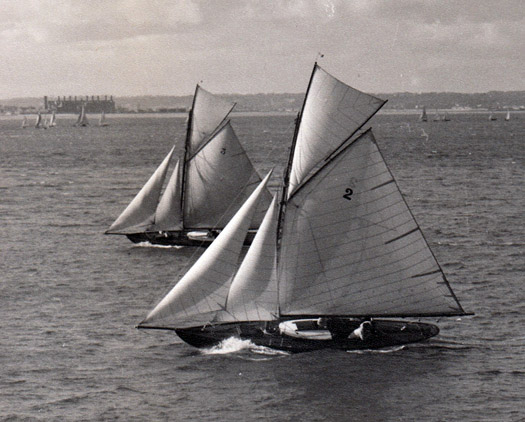 In a moderate breeze, the Dubin Bay 21s under their original rig undoubtedly carried a small amount of weather helm, and there was no evidence of lee helm at all.
In a moderate breeze, the Dubin Bay 21s under their original rig undoubtedly carried a small amount of weather helm, and there was no evidence of lee helm at all.
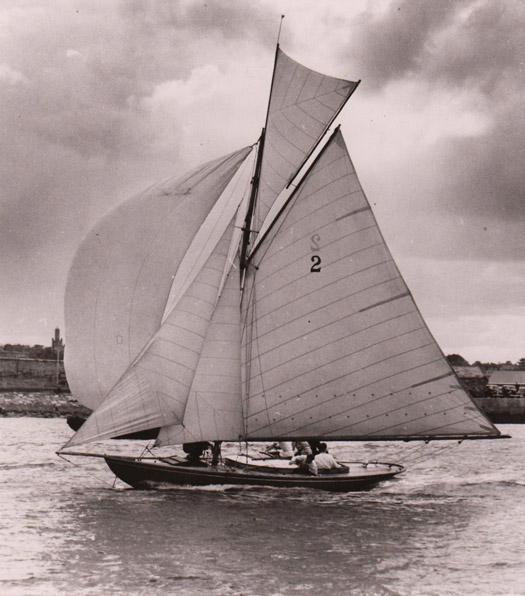 Dublin Bay 21 at full cry in the final short in-harbour run from the Coal Harbour buoy to the finish off the club. For this crucial little leg, instant spinnaker setting was essential. It can be noted that the crewmember on the right in the cockpit is trimming the mainsheet by looking aft, the sheet being cleated to the cockpit coaming. In severe weather, this crude method of sheeting could sometimes see the entire sheet being let go completely out of control, whereupon the boat's bow would be forced off by the still-sheeted headsails, the main would then partially fill on the reach as the hyper-long mainboom had started to trail in the sea, and the risk of sinking became very real.
Dublin Bay 21 at full cry in the final short in-harbour run from the Coal Harbour buoy to the finish off the club. For this crucial little leg, instant spinnaker setting was essential. It can be noted that the crewmember on the right in the cockpit is trimming the mainsheet by looking aft, the sheet being cleated to the cockpit coaming. In severe weather, this crude method of sheeting could sometimes see the entire sheet being let go completely out of control, whereupon the boat's bow would be forced off by the still-sheeted headsails, the main would then partially fill on the reach as the hyper-long mainboom had started to trail in the sea, and the risk of sinking became very real.
So it could well be that if a re-built class of Dublin Bay 21s ever emerges, that then they might be given an added safety factor by having the mainsheet led forward, guided close along the underside of the mainboom, and then come down the aft side of the mast to be controlled by a winch on top of the coachroof.
As to whether or not we'll ever see the 21s race again, the odd thing is I think this week's intense exchange here on Afloat.ie may have brought it all a bit nearer. Because if you plough on through the icy politeness of the initial exchanges between Hal Sisk and Roger Bannon, I think you'll discern that they both reckon a cold moulded multi-skin timber hull construction to be a very viable option.
Roger Bannon points out that building a completely new hull on the ballast keel of the original boat is recognized under maritime law as being the continued existence of the same boat, which somehow is an oddly heartening bit of information when you look at the utter dereliction of the DB 21 hulls today.

Could this be the future for the Dublin Bay 21s? Beautiful multi-skin construction under way on Steve Morris's 32ft Harrison Butler designed classic at Moyasta near Kilrush. If it's adopted for the revival of the Dublin Bay 21s, as several of the boats would be buit in one batch construction could be facilitated by the inverted hulls being built on a male mould, thereby making the work easier for newcomer to boatbuilding working on a community basis.
Photo: W M Nixon
And as for Hal Sisk and Fionan de Barra, they've been considering seriously the work being done by Steve Morris near Kilrush in building a cold-moulded classic cutter to Harrison Butler's Khamseen design. Steve was the lead builder in constructing the superb gaff cutter Sally O'Keeffe down in West Clare. So when you see his work on his new boat, all things seem possible, particularly if it's agreed that the new Dublin Bay 21s should be cold-moulded in multi-skin timber on inverted hulls in a maritime community project in Dun Laoghaire, as the basic work would be relatively unskilled, and everyone could have a go at it.
For, as the success of the wonderful CityOne dinghy project in Limerick has shown, in sailing the building of the boat can be as much part of the experience as the subsequent time afloat. But if we ever do see the Dublin Bay 21s sailing again, let it please be with the proper rig. Everyone seems to be pussy-footing around the idea of a more easily handled semi-gunter configuration, maybe with just one jib. What's the point of all that? This isn't meant to be Easy Street. Let's have the full jackyard tops'l and cutter rig and all the bells and whistles, or let's not bother at all.
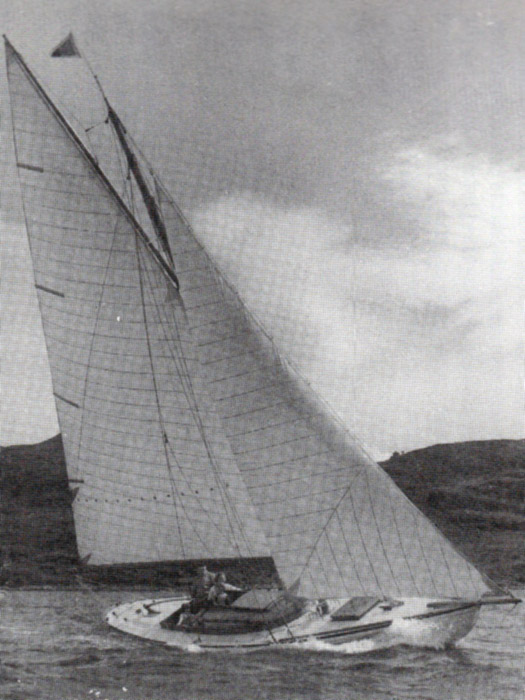
Should the Dublin Bay 21s be re-built, it has been suggested that for ease of handling and project management they might in future use this simpler "American gaff" rig, as seen here on Zanetta which was built on the Clyde in 1918 to the Dublin Bay 21 design.............

,,,,,but here at Afloat.ie, we reckon that would be the wrong approach. If you're going to have a new Dublin Bay 21, then she should have all the classic bells and whistles and more sail than is good for her, just as we see here with the Ringsend-built Innisfallen having a bit of sport with her spinnaker in the 1950s.
Another Superyacht Visits Dublin as 'Arcadia' Berths at Dun Laoghaire Marina
#arcadia – Dun Laoghaire Marina welcomed another superyacht visitor this week when the 35.80m Arcadia berthed at the 800–berth south Dublin Bay facility. Not only does the impressive 'Arcadia' have gorgeous lines but as the 159th vessel to transit the Northwest Passage, she's also a serious long distance expedition motor yacht too.
This luxury vessel's sophisticated exterior design and engineering are the work of Tony Castro Design, the designer of none other than Royal Cork's own 1720 acclaimed sportsboat design. Arcadia was custom built in 2006 by Royal Huisman.
The visit follows June's biggest ever visitor to Dun Laoghaire when the marina said hello to 46m Superyacht Christopher.
Arcadia yacht has an alustar hull with an alustar superstructure with a beam of 8.24m (27'0"ft) and a 2.99m (9'9"ft) draft.
She offers accommodation for up to eight guests and is also capable of carrying up to seven crew onboard to ensure a 'relaxed luxury yacht' experience.
Reports from the Dun Laoghaire watefront say Arcadia owners and crew are having 'a wonderful time' touring the Dun Laoghaire locality, as well as the city centre, and are especially interested in visiting famers markets to sample the best of locally sourced produce.
Emergency Displays To Be Part of Dun Laoghaire Lifeboat Open Day
#rnli – As the busy Summer season draws to an end, the RNLI volunteers at Dun Laoghaire will be holding their annual Open Day on Sunday 14th September where visitors can inspect boats, equipment, safety gear and much more.
Starting at 2pm, the main lifeboat station beside the Carlisle Pier will be open for tours of "Anna Livia" the All-Weather lifeboat, displays of personal protective equipment, free safety information and life-jacket clinic from the RNLI Sea Safety team and much more.
At the East Pier, the Inshore lifeboat 'Realt Na Mara' will be on display at the old boathouse beside Rogan's Slipway and visitors see this small but highly flexible rescue craft up close including the latest equipment that makes it the busiest class of lifeboat in the RNLI fleet.
Special guests will be visiting the RNLI station during the afternoon to demonstrate inter-agency co-operation and capabilities. The Irish Coast Guard Rescue helicopter from Dublin Airport will be on hand at 2pm while the Dublin & Wicklow Mountain Rescue Team will also have a display at the lifeboat station. Members of the Dun Laoghaire Coast Guard Unit will also be in attendance.
The RNLI lifeboat station Open Day is a family-oriented event suitable for most age-groups and souvenirs in support of the charitable work of the RNLI will be on sale in the station shop throughout the afternoon and is also open year-round.
The RNLI lifeboat station in Dun Laoghaire is one of 45 such operations in Ireland that are the primary boat responders for emergency incidents around the coast and form part of the resources available to the Irish Coast Guard service, the statutory organisation that co-ordinates Search & Rescue and pollution incidents in Irish waters.
There are 35 operational volunteers with the RNLI station in Dun Laoghaire that respond to emergency call-outs 24 hours a day, 365 days a year including Christmas Day and other holidays. Both lifeboats typically launch within 10 minutes of call-out and the station is regularly the busiest in Ireland.
#cruiseliners – The Wind Surf – the largest ship in the Windstar Cruises fleet – will dock at Dun Laoghaire Harbour tomorrow, Thursday, 4th September at 8am.
As previously reported, her arrival marks the final cruise call of the season for Dun Laoghaire after a hugely successful series of cruise dockings at the harbour this spring / summer.
The Wind Surf, one part sailing yacht and one part upscale cruise ship, has seven triangular, self-furling, computer operated sails, making a stunning ship. The ship, known for its luxurious amenities and unique ports of call, carries 312 guests and 191 international staff.
The cruise ship's docking at the harbour coincides with Dun Laoghaire Harbour Company's recent announcement that 2015 will be the most successful year ever for Dun Laoghaire in terms of attracting cruise passengers to the harbour. A total of 23 cruise vessels have already been confirmed to visit Dun Laoghaire in 2015. The size of these ships is such that they will bring a record 66,867 passengers.
Speaking ahead of tomorrow's docking of the Windsurf, Gerry Dunne, CEO of Dun Laoghaire Harbour Company, said: "Since 2012, due to the attractiveness of Dun Laoghaire and its wonderful harbour, the number of cruise bookings has grown exponentially and 2015 will be the most successful year ever for Dun Laoghaire in terms of attracting cruise passengers to the harbour.
"We welcome cruise ships of all shapes and sizes and are delighted that the Windsurf will be docking at Dun Laoghaire Harbour. Cruise passengers provide a valuable source of business for retail outlets and restaurants, which will deliver a huge economic boost for the town and its hinterland," he added.
#optimist – Anyone looking at the 254 young sailors – mostly thirteen to fifteen year olds – milling around at the closing ceremony of the recent Optimist European Championships in Dun Laoghaire on Dublin Bay last weekend might wonder what future participation in sailing holds for them writes David O'Brien.
No crystal ball is available but it is possible to research with the help of Google what has happened to their opposite numbers of ten years ago, the participants in the championship of 2004 held in Sandhamn in Sweden. What follows is the result of such research seen by Afloat.ie into a random 20% sample of those sailors.
From the start it must be said that these 2004 sailors were already an 'elite'. They had qualified at national level on the basis of trials almost always involving over a hundred contemporaries and in larger countries far more. They are the equivalent in sailing of the young athletes from all the other Olympic sports who will be participating in the Youth Olympic Games in China this August. Indeed around 60% of the sailors who will be competing in dinghies in those Youth Olympics will be graduates of IODA championships (the Optimist worlds and the five continental championships of which the European Championship is one).
Mention was made at the Dun Laoghaire closing ceremony of the link to the real Olympics and that 60% of participants in 2012 had sailed in IODA events. However with just 318 dinghy places in Rio 2016 the chances to qualify of any one of the 800 sailors a year participating in IODA championships are limited. To date only six of the 268 in Sandhamn have become Olympians. Unlike some other sports such as tennis sailing is not in general a professional sport and very few of the sailors of 2004 have even received expenses to continue to compete.
The methodology of the study was to Google the names of every fifth sailor and note the latest year in which he or she could be found on the results sheet of any sailing competition. The sample size is thus 34 boys and 20 girls. Admittedly, this study is not perfect since the names of the sailors crewing on bigger boats are rarely shown in the results, and secondly transliteration of names especially in languages such as Greek can vary.
As a result the following figures are probably an under-estimate especially as the sailors get older and are more likely to be crewing on bigger boats.
The percentages found to be competing are as follows:
| Year | 2006 | 2008 | 2010 | 2012 |
| Average age | 16 | 18 | 20 | 22 |
| Boys | 85% | 79% | 74% | 62% |
| Girls | 90% | 80% | 55% | 35% |
This study throws no light on why the percentage of females declines so sharply at 18+. It is notable that four of the seven girls in the sample known to be still sailing at age 22 were sailing Olympic Class boats whereas only six of the 21 boys were doing so, but this sample may be statistically too small for such detailed analysis to be valid.
The future sailing of the 2004 Irish team is not statistically significant (one country in one year) but similar Google research showed that more of the 2004 Irish girls continued to sail than the global figures above, the Irish boys rather fewer.
While it is relatively easy to study, as above, the future sailing of a small elite, similar research for larger numbers presents problems. In France, the meticulous documentation kept by the French Federation suggests that around 50% of those who race at any level in the 10-14 age brackets continue to do so, mostly in keelboats, past eighteen. Worldwide any data about those who sail but do not race appear to be totally unreliable.
What does the future hold for our children? No one knows for sure but, thanks to Google, at least we can start to sketch a picture of sailing's class of 2004.




























